This article was medically reviewed by Luba Lee, FNP-BC, MS. Luba Lee, FNP-BC is a Board-Certified Family Nurse Practitioner (FNP) and educator in Tennessee with over a decade of clinical experience. Luba has certifications in Pediatric Advanced Life Support (PALS), Emergency Medicine, Advanced Cardiac Life Support (ACLS), Team Building, and Critical Care Nursing. She received her Master of Science in Nursing (MSN) from the University of Tennessee in 2006.
There are 7 references cited in this article, which can be found at the bottom of the page.
This article has been viewed 101,195 times.
An ingrown hair occurs when a hair grows back into the skin rather than growing out of the skin. Ingrown hairs are quite common in both younger and older people, but are most common in people with tightly curled hair, as the natural curl tends to push the hair back into the skin. Ingrown hairs are also more common in areas where the hairs have been removed by shaving, tweezing, or waxing. These hairs can form itchy and infected bumps that can be painful and can also cause scars, especially if a person tried to use a needle, pin, or other object to “dig out” the ingrown hair.[1] Next time you get an ingrown hair, instead of "digging it out" try other solutions.
Steps
Tending to Ingrown Hairs
-
1Never try to cut out an ingrown hair. If ingrown hairs become chronic and you try to use some object to dig out the ingrown hair, scars can form. Avoid any “bathroom surgery” and don't use tweezers, needles, pins, or anything else to dig out an ingrown hair. This will increase the risk of a scar forming and can increase the risk of spreading the infection.
-
2Stop shaving, tweezing, waxing, or removing the hair in the affected area. You need to hold off will all hair removal in the area until the infection is cleared.[2] Ingrown hairs appear to form when the hair is cut at or below the level of the skin, leaving a sharp edge to the hair which then grows sideways into the skin.[3] Continuing to remove hair from the area could result in additional ingrown hairs or further irritation to the infected area, both of which you want to avoid.Advertisement
-
3
Dealing With the Infection
-
1Soak an infected hair. Soak a clean washcloth with very warm water and it place over the infected area. Leave it on for three to five minutes, or until the washcloth cools down. Repeat this process at least three to four times twice a day. The heat may cause the infection to “come to a head” and drain.
- An advantage to this approach is that it minimizes the chances of scarring.
- Use a clean, fresh washcloth every time and make certain you wash your hands before and after applying. Doing this can prevent any further bacteria entering the skin at that site.
-
2Use a topical (skin) antibiotic. Before you apply an antibiotic wash and dry the area thoroughly. Topical antibiotics usually contain three different antibiotics and they can come in a gel, cream, or lotion form. The specific antibiotics can vary, but usually include Bacitracin, Neomycin and Polymixin.
- Use as directed and make certain you wash your hands before and after applying.
- You may wish to do a spot-test first, as some people react unfavorably to topical antibiotics. Apply the antibiotic to a small area of skin (the skin on your wrist is good if you plan to apply the ointment somewhere with delicate skin, such as your pubic area) and check to make sure you don't develop a rash or other adverse reaction.
-
3Contact your doctor if the condition worsens. If you don’t see any improvement within five to seven days or if the infection seems to be getting worse or spreading, contact your physician or dermatologist for an appointment. Your doctor may need to open up the skin in order to release the infection.[6]
- Don't try to open up the infection yourself at home. A doctor knows how to make incisions correctly, will use sterile equipment, such as a clean scalpel, and will do it in a sterile environment.
-
4Follow your doctor's treatment advice. Your doctor may tell you to let the infection heal naturally or will prescribe you medicine. He or she may prescribe a prescription oral antibiotic, a retinoid to remove dead skin and discoloration around the ingrown hair, or a steroid medicine to apply directly to the infected area. [7]
- Follow the directions on the medicine closely. You should always continue using medicine for as long as you are told to, even if the problem goes away before you are done with the prescription.
- Your doctor may also give you suggestions for preventing future ingrown hairs.
Using Unverified Natural Products to Treat Ingrown Hairs
-
1Use antibacterial essential oils to treat skin infections. You can use a Q-tip or a cotton ball to apply your chosen essential oil directly on the infected ingrown hair, but if you have sensitive skin, you may need to dilute the oil with a "carrier oil" like coconut oil (especially with oils like tea tree, which can be particularly harsh on the skin). You can leave the essential oil on or rinse it off with warm water after at least 30 minutes. Find a homeopath to assist you in choosing which oil will be best for you. Some essential oils to try include:[8] [9]
- Tea tree oil
- Eucalyptus
- Peppermint oil
- Orange oil
- Garlic oil
- Clove oil
- Lime oil
- Rosemary oil
- Geranium oil
- Lemon oil
-
2Use some “spot exfoliation” to help remove the ingrown hair. Mix ½ teaspoon of baking soda or sea salt with 1–2 tablespoons (14.8–29.6 ml) of olive oil, which has antibacterial properties of its own. Use a Q-tip or cotton ball to apply the mixture to the infected ingrown hair.
- Use the tip of one or two fingers to gently rub in the exfoliating mixture using circular motions. First rub in using three to five clockwise motions and then reverse, using three to five counterclockwise motions. Rinse off with warm water and pat dry. Wash your hands and put the towel in with the laundry to prevent spreading the infection. Repeat twice a day.
- Remember to be very gentle and to use gentle, circular motions to dislodge the hair. Scars can form after particularly vigorous exfoliation because exfoliation can irritate and damage already sensitive skin.
- Also keep in mind that infections take time to heal. If the ingrown hair appears to be getting better, continue treatment until it is resolved. If it is not improving, see your medical provider.
-
3Use honey as both an antibacterial and to help draw out any infection.[10] Manuka honey is the one that has been most extensively tested, but any organic honey may be useful. Use a cotton swab to apply the honey onto the infected ingrown hair and allow it to remain for five to 10 minutes. Rinse off with warm water and pat dry — wash your hands and put the towel in with the laundry to prevent spreading the infection. Repeat twice a day.
- Don't use this remedy if you are sensitive to honey.
Warnings
- Do not use any treatment that involves or contains something you are allergic to.⧼thumbs_response⧽
- If the condition does not improve within five to seven days or if the rash spreads, see your doctor.⧼thumbs_response⧽
References
- ↑ http://www.medicinenet.com/ingrown_hair/article.htm
- ↑ http://www.mayoclinic.org/diseases-conditions/ingrown-hair/basics/treatment/con-20034717
- ↑ http://www.medicinenet.com/ingrown_hair/article.htm
- ↑ http://www.medicinenet.com/ingrown_hair/article.htm
- ↑ http://www.mayoclinic.org/diseases-conditions/ingrown-hair/basics/treatment/con-20034717
- ↑ http://www.webmd.com/skin-problems-and-treatments/guide/ingrown-hair-causes-symptoms-treatment?page=2
- ↑ https://www.nlm.nih.gov/medlineplus/druginfo/meds/a601098.html
- ↑ http://www.ncbi.nlm.nih.gov/pubmed/8893526
- ↑ http://bmccomplementalternmed.biomedcentral.com/articles/10.1186/1472-6882-6-39
About This Article
Infected ingrown hairs can form itchy bumps that are painful and sore. To treat an infected ingrown hair, it’s important to keep your skin moisturized, which will help soften the skin and reduce the risk of scarring. Avoid pulling out your hairs or shaving the area, since this can make the infection worse. Soak a clean washcloth with warm water and hold it on your ingrown hair for 5 minutes. Repeat this a few times a day to help the infection come to a head and drain. You can also apply an antibiotic cream to the area to help fight the infection. However, it should go away on its own. If you don’t see any improvement within 5 days or your infection gets worse, visit your doctor for treatment. For more tips from our Medical co-author, including how to use unverified natural products to treat your ingrown hair, read on.
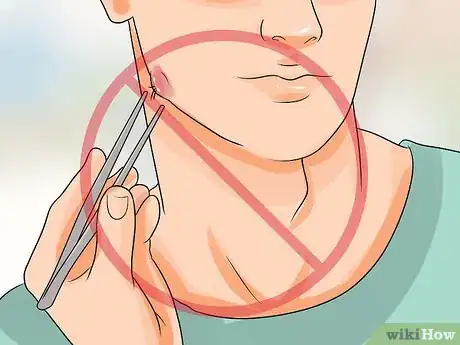
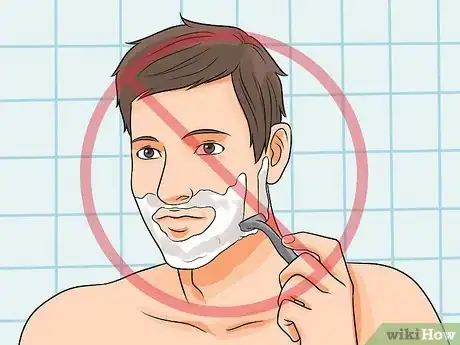
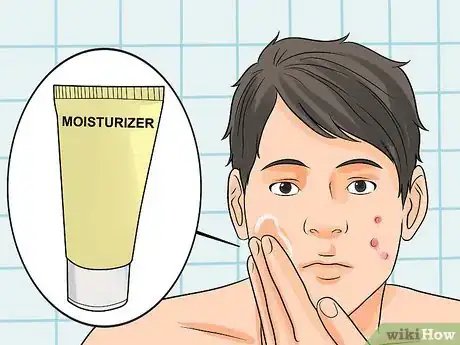
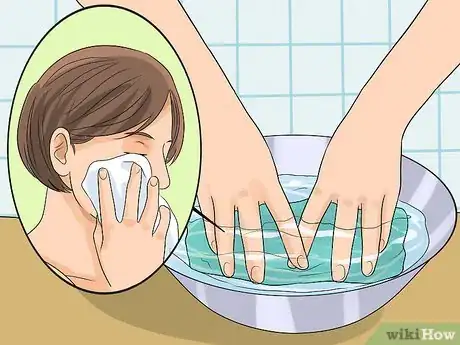
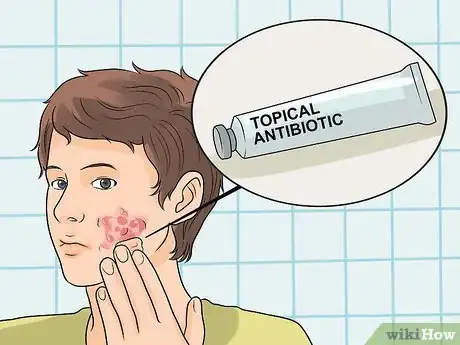
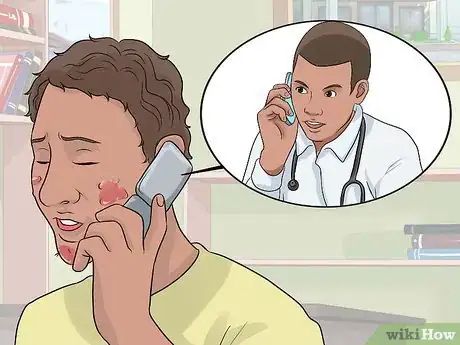

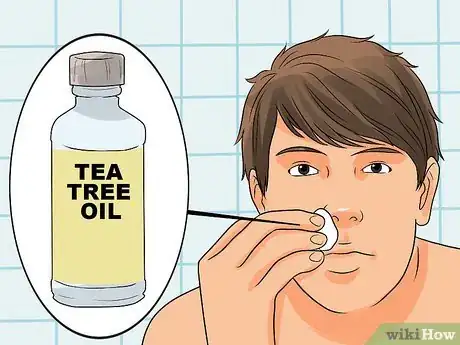
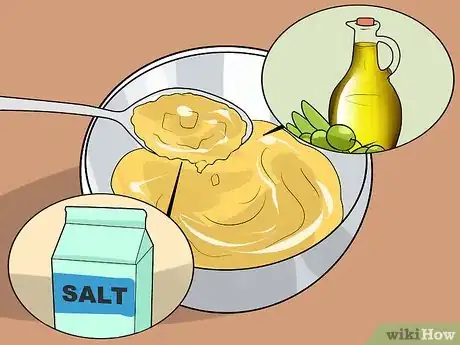
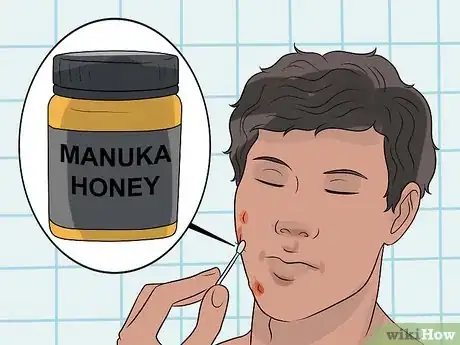
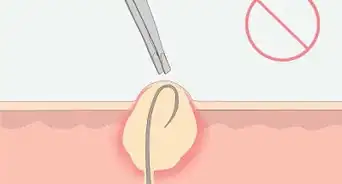

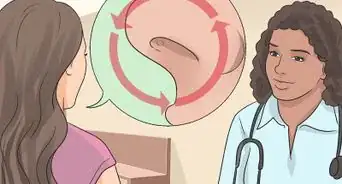
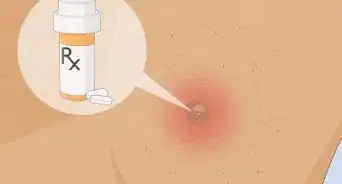
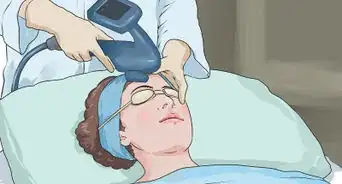
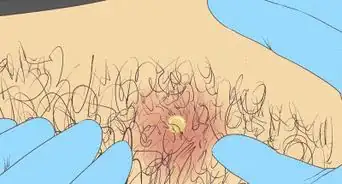
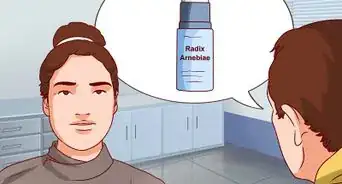
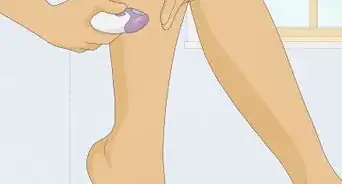
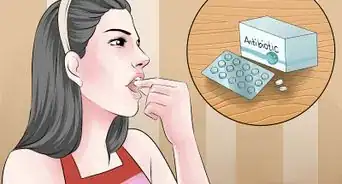
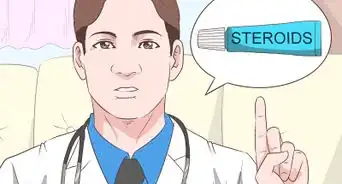
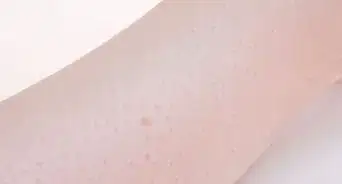
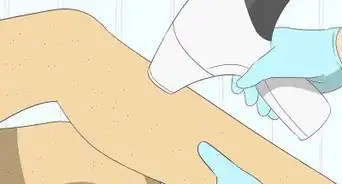
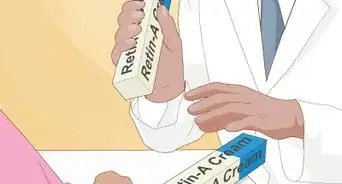
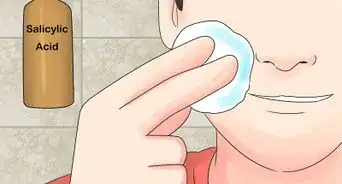







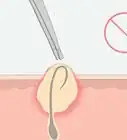
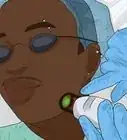
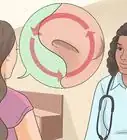
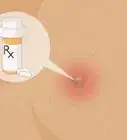



































Medical Disclaimer
The content of this article is not intended to be a substitute for professional medical advice, examination, diagnosis, or treatment. You should always contact your doctor or other qualified healthcare professional before starting, changing, or stopping any kind of health treatment.
Read More...